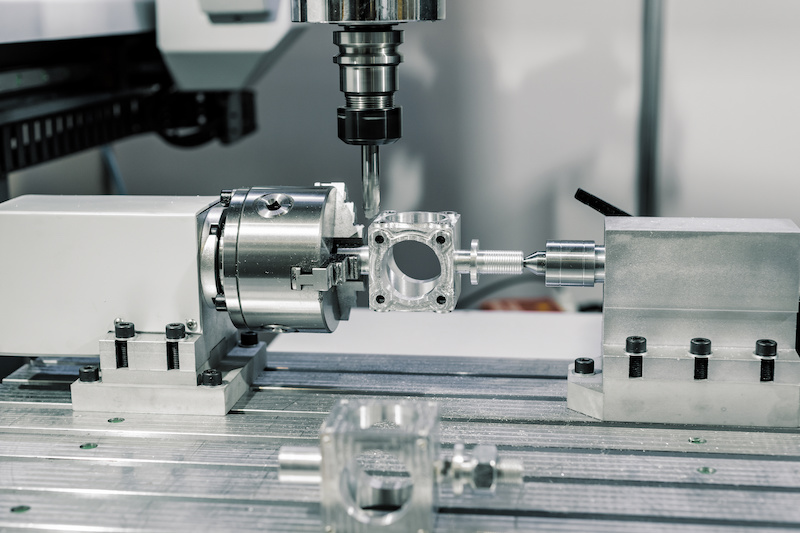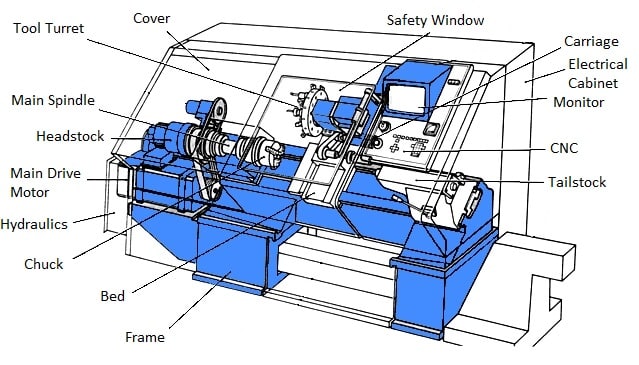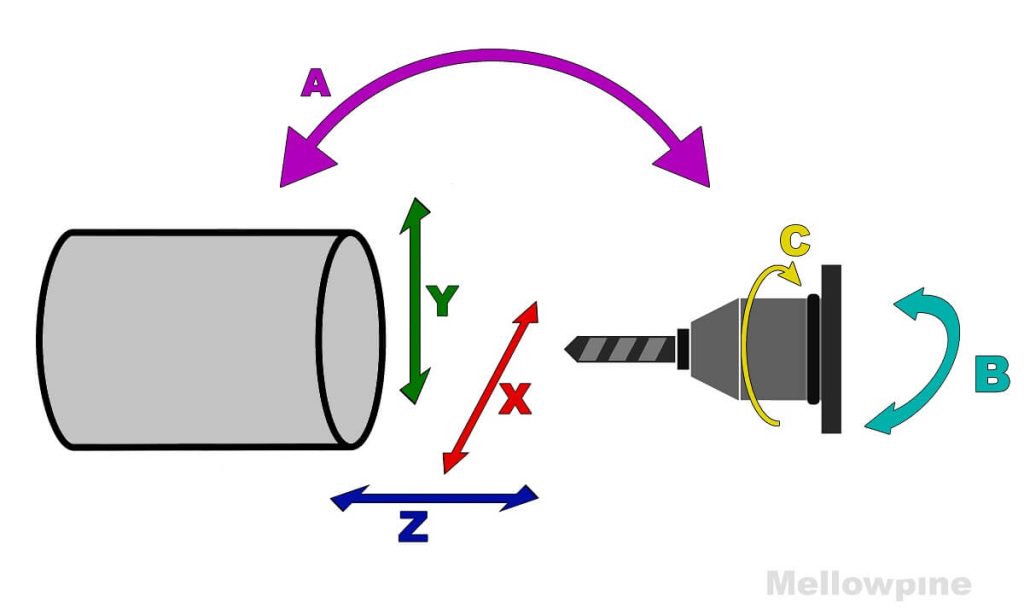Table of Contents
Acme threads are essential for various mechanical applications, and if you want to cut them on a CNC lathe, you need to follow a specific process. CNC lathes are versatile machines that can handle different types of threads, but cutting Acme threads requires some skills and knowledge. In this article, we will guide you on how to cut Acme threads on a CNC lathe step-by-step, from selecting the right tool to programming the lathe, and everything in between.
Whether you are a beginner or an experienced CNC operator, learning how to cut Acme threads on a CNC lathe can open up new opportunities for you. Acme threads are commonly used in lead screws, feed screws, and power transmission systems, and knowing how to cut them can help you produce high-quality parts for different industries. So, let’s dive into the world of Acme threads and discover how you can cut them on a CNC lathe like a pro.
- Mount the Acme threading tool on the CNC lathe
- Set the tool’s height to match the centerline of the workpiece
- Calculate the pitch diameter of the thread
- Set the lathe’s spindle speed and feed rate according to the material being cut
- Cut the Acme thread by making multiple passes, each slightly deeper than the previous one, until the desired depth is reached
- Check the thread’s pitch diameter with a thread micrometer
- Adjust the tool’s position and repeat the cutting process if necessary
How to Cut Acme Threads on a CNC Lathe?
Acme threads have a trapezoidal shape which makes them suitable for applications that require high load-bearing capacity. Cutting Acme threads on a CNC lathe can be a daunting task for beginners, but with the right knowledge and skills, it can be easily accomplished. In this article, we will provide a step-by-step guide on how to cut Acme threads on a CNC lathe.
Step 1: Choose the Right Tooling
The first step in cutting Acme threads is to choose the right tooling. The most commonly used tool for cutting Acme threads is a carbide threading insert. These inserts come in different shapes and sizes, and it’s important to choose the right one for the job. The shape of the insert should match the thread profile, and the size should be appropriate for the diameter of the workpiece.
Once you have chosen the right insert, it’s important to set the correct cutting parameters such as speed, feed, and depth of cut. These parameters will vary depending on the material being cut and the size of the workpiece. It’s important to consult the manufacturer’s recommendations for the correct cutting parameters.
Step 2: Set Up the CNC Lathe
Before you start cutting Acme threads, it’s important to set up the CNC lathe properly. This involves selecting the correct program and setting the workpiece in the chuck. The chuck should be tightened securely to prevent any movement during the cutting process.
Once the workpiece is securely in place, it’s important to adjust the tool height and position. This can be done using the tool height offset and tool position offset functions on the CNC lathe.
Step 3: Start Cutting
Now that the tooling is set up and the CNC lathe is ready, it’s time to start cutting Acme threads. The cutting process should be done in several passes, with each pass removing a small amount of material. This will ensure that the threads are cut accurately and the surface finish is smooth.
During the cutting process, it’s important to monitor the cutting parameters and adjust them if necessary. This will ensure that the cutting process is efficient and the tooling is not damaged.
Step 4: Check the Thread Pitch
Once the cutting process is complete, it’s important to check the thread pitch using a thread pitch gauge. This will ensure that the threads are cut accurately and match the required specifications. If the thread pitch is incorrect, adjustments can be made to the cutting parameters and the process can be repeated.
Benefits of Cutting Acme Threads on a CNC Lathe
Cutting Acme threads on a CNC lathe has several benefits over traditional methods. CNC lathes are more accurate and efficient, which results in better thread quality and faster production times. They also allow for more complex thread designs and can handle a wider range of materials.
Acme Threads vs Other Thread Forms
Acme threads are preferred over other thread forms such as square threads and buttress threads for applications that require high load-bearing capacity. Square threads have a higher friction coefficient, which can lead to increased wear and tear on the thread. Buttress threads are designed for applications that require high axial force, but they are not suitable for applications that require high radial force.
Conclusion
Cutting Acme threads on a CNC lathe requires the right tooling, proper setup, and careful monitoring of cutting parameters. By following the steps outlined in this article, you can easily cut Acme threads on a CNC lathe and achieve accurate and high-quality results. The benefits of cutting Acme threads on a CNC lathe make it a preferred method over traditional methods for applications that require high load-bearing capacity.
Frequently Asked Questions
In this section, we will cover some of the frequently asked questions about cutting Acme threads on a CNC Lathe.
What are Acme threads and why are they used?
Acme threads are a type of trapezoidal screw thread used for power transmission applications, particularly for lead screws and power screws. They are designed to provide high efficiency and accuracy, as well as resistance to wear and tear. Acme threads are commonly used in CNC machines and other industrial equipment that require precise and reliable motion control.
Acme threads have a 29-degree thread angle, with a flat crest and a rounded root. This design provides a larger contact area between the threads, which reduces friction and wear. Acme threads are also self-locking, which means that they can hold a load without requiring a brake or other locking mechanism.
What is a CNC lathe and how does it work?
A CNC lathe is a computer-controlled machine tool that is used to shape and cut materials, such as metal, wood, and plastic. The lathe spins the material, and a cutting tool is moved along the surface to remove material and create the desired shape. The CNC system controls the movement of the cutting tool, allowing for precise and repeatable cuts.
CNC lathes are used in a wide range of industries, including aerospace, automotive, and medical manufacturing. They are capable of producing complex parts with high accuracy and consistency, and they can be programmed to perform a variety of operations, such as drilling, milling, and threading.
What are the steps for cutting Acme threads on a CNC lathe?
The first step in cutting Acme threads on a CNC lathe is to select the appropriate threading tool. The tool should be designed specifically for Acme threads and should have the correct thread angle and geometry. The tool should also be properly sharpened and aligned with the workpiece.
Next, the CNC system should be programmed to perform the threading operation. This will involve specifying the thread pitch, depth, and other parameters. The lathe should be set up to ensure that the workpiece is properly supported and aligned with the threading tool. Finally, the threading operation can be performed, with the CNC system controlling the movement of the cutting tool to create the desired thread pattern.
What are some tips for cutting Acme threads on a CNC lathe?
One important tip for cutting Acme threads on a CNC lathe is to use the correct cutting speed and feed rate. The cutting speed should be optimized for the material being cut and the tool being used, while the feed rate should be adjusted to achieve the desired thread pitch and depth. It is also important to use coolant or lubricant to reduce friction and heat buildup.
Another tip is to ensure that the threading tool is properly aligned with the workpiece. Any misalignment can result in poor thread quality or tool damage. Additionally, the lathe should be properly maintained and calibrated to ensure that it is operating at peak performance.
What are the advantages of using a CNC lathe for cutting Acme threads?
Using a CNC lathe for cutting Acme threads offers several advantages over manual methods. First and foremost, the CNC system allows for precise and repeatable cuts, ensuring consistent thread quality and accuracy. Additionally, CNC lathes are capable of performing complex threading operations that would be difficult or impossible to do by hand.
CNC lathes also offer increased efficiency and productivity, as they can perform threading operations faster and with less operator intervention. They also reduce the risk of human error and can operate continuously for long periods of time. Overall, using a CNC lathe for cutting Acme threads can improve quality, reduce costs, and increase throughput.
In conclusion, cutting Acme threads on a CNC lathe can seem like a daunting task, but with the right techniques and tools, it can be easily accomplished. The first step is to ensure that your lathe is appropriately set up for the job. This includes selecting the right tooling, setting the correct speed and feed rates, and ensuring that the lathe is properly aligned.
Next, it is crucial to understand the Acme thread’s unique characteristics, including its trapezoidal shape and steep pitch angle. Once you have a solid understanding of these features, you can begin the cutting process using a combination of roughing and finishing passes.
Finally, it is essential to continually monitor your cutting progress and make any necessary adjustments along the way. With practice and patience, you can master the art of cutting Acme threads on a CNC lathe and produce high-quality threaded components for a wide range of applications. So, get started today and discover the many benefits of this versatile machining technique!
Request a quote today!
[contact-form-7 id="1578" title="Contact form"]
Please compress the file into a ZIP or RAR file before uploading. Alternatively, send through your RFQ by email.
enquires@unitymanufacture.com





